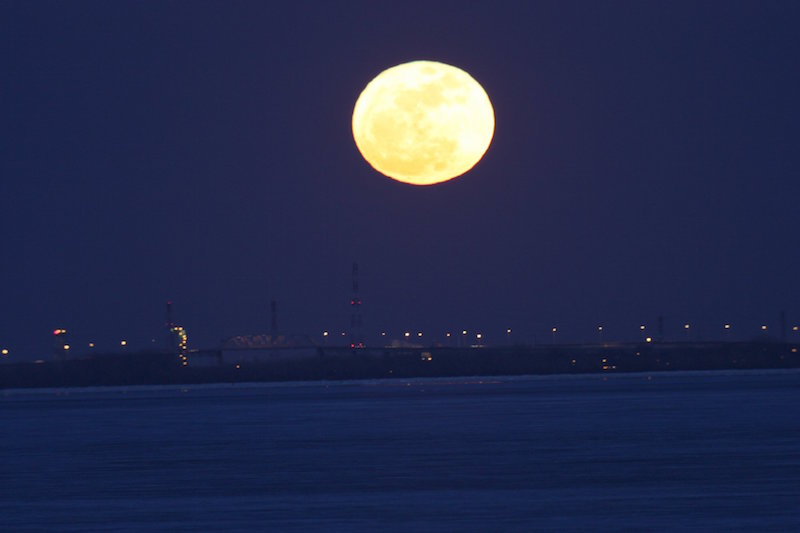 Photo: Andrew Fazekas
Photo: Andrew Fazekas
On November 14th skywatchers around the world get a chance to see the biggest, closest and brightest full moon that has graced our skies in seven decades.
Known popularly these days as a Supermoon, it is also called a perigee full moon by astronomers- which basically refers to when the moon is at its closest point to Earth in its elliptical orbit, during its full phase.
We are actually in the middle of a trio of supermoons, with the last of the series occurring in December. However November’s event will see the full moon at its best in our skies not only for 2016 but also until 2034!
How to See
The most spectacular time to see the moon will be when it is rising in the east moments after the sun sets in the west. In fact any full moonrise is worth a gander, especially if you have never seen it with your own eyes. If you can try to find a viewing location along a lake or riverside or hill top and watch the silvery orb rise above the water or landscape.
When the moon is near the horizon you may notice that it appears larger than usual. This is simply an optical illusion caused by our minds becoming confused as to the true size of the lunar disk when positioned next to more familiar Earthly landscape features like houses, trees, and mountains. When the moon rises into the overhead sky however it will appear smaller. You can prove this is an illusion by simply using your outstretched thumb to gage the true size of the moon in the sky. And you will notice it doesn't change from when its at the horizon or high overhead.

Take a Shot!
This super moon will no doubt make for an amazing souvenir snap shot too. Using simply your smartphone, or perhaps a digital camera fixed on top of a tripod, you can take some amazing photographs of the super moon.
And we would love for you to send us your best supermoon shot! Perhaps you can frame t he moon with a beautiful landscape in the foreground, or take a selfie with the moon, or fun photo with your friends, family and children playing with the moon.
We invite you to upload your photos directly onto our Facebook page or Twitter feed and we'll make sure we share it with the world.





 Photo: Andrew Fazekas
Photo: Andrew Fazekas
